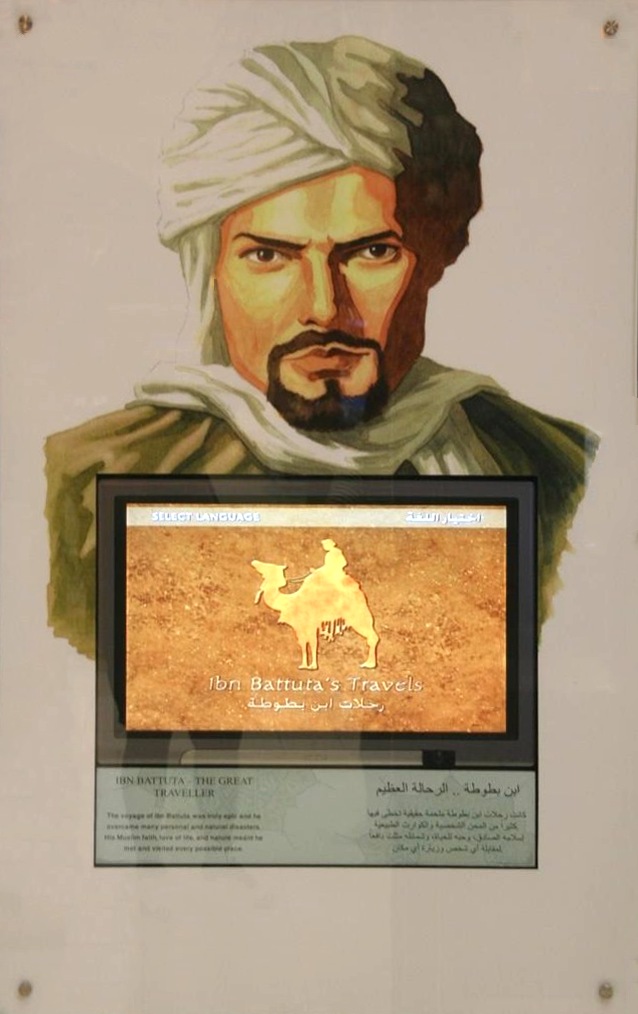“Traveling—it leaves you speechless, then turns you into a storyteller.”
Zdroj: The Travels of Ibn Battutah
Ibn Battúta , arab. إبن بطوطة, bol berberský účenec, právnik a sudca. Preslávil sa však ako cestovateľ, geograf a spisovateľ, ktorý počas 30 rokov precestoval asi 117 000 km a svoje cesty a zážitky nadiktoval do knihy zvanej jednoducho Cesta .
Jeho arabské meno sa udáva ako Abú Abd Alláh Muhammad bin Abd Alláh bin Muhammad bin Ibráhím al-Lawátí at-Tandží . Spomína sa aj pod menom Šams ad-Dín , to je však čestný prívlastok ktorým sa oslovovali islamskí učenci.
Dňa 14. júna 1325, vo veku 21 rokov, sa Ibn Battúta vydal na muslimskú púť hadždž do Mekky. Po vykonaní púte pokračoval v cestovaní a do Fezu v Maroku sa vrátil skoro po 30 rokoch, v roku 1354. Okrem Severnej Afriky a Blízkeho východu precestoval Západnú Afriku, Južnú a Východnú Európu, Indický subkontinent, Strednú Áziu, Juhovýchodnú Áziu a Čínu.
Wikipedia

“Traveling—it leaves you speechless, then turns you into a storyteller.”
Zdroj: The Travels of Ibn Battutah
Quoted from Lal, K. S. (1992). The legacy of Muslim rule in India. New Delhi: Aditya Prakashan. Chapter 1
Travels in Asia and Africa (Rehalã of Ibn Battûta)
Quoted from Lal, K. S. (1990). Indian muslims: Who are they.
Travels in Asia and Africa (Rehalã of Ibn Battûta)
Travels in Asia and Africa (Rehalã of Ibn Battûta)
Travels in Asia and Africa (Rehalã of Ibn Battûta)
Travels in Asia and Africa (Rehalã of Ibn Battûta)
Travels in Asia and Africa (Rehalã of Ibn Battûta)
About the Maldive Islands , The Rehalã of Ibn Battûta translated into English by Mahdi Hussain, Baroda, 1967.
Travels in Asia and Africa (Rehalã of Ibn Battûta)
Travels in Asia and Africa (Rehalã of Ibn Battûta)
About Delhi. The Rehalã of Ibn Battûta translated into English by Mahdi Hussain, Baroda, 1967, p. 27
Travels in Asia and Africa (Rehalã of Ibn Battûta)
Lahari Bandar (Sindh) . The Rehalã of Ibn Battûta translated into English by Mahdi Hussain, Baroda, 1967, p. 10.
Travels in Asia and Africa (Rehalã of Ibn Battûta)
Quoted from Lal, K. S. (1999). Theory and practice of Muslim state in India. New Delhi: Aditya Prakashan. Chapter 4
Travels in Asia and Africa (Rehalã of Ibn Battûta)